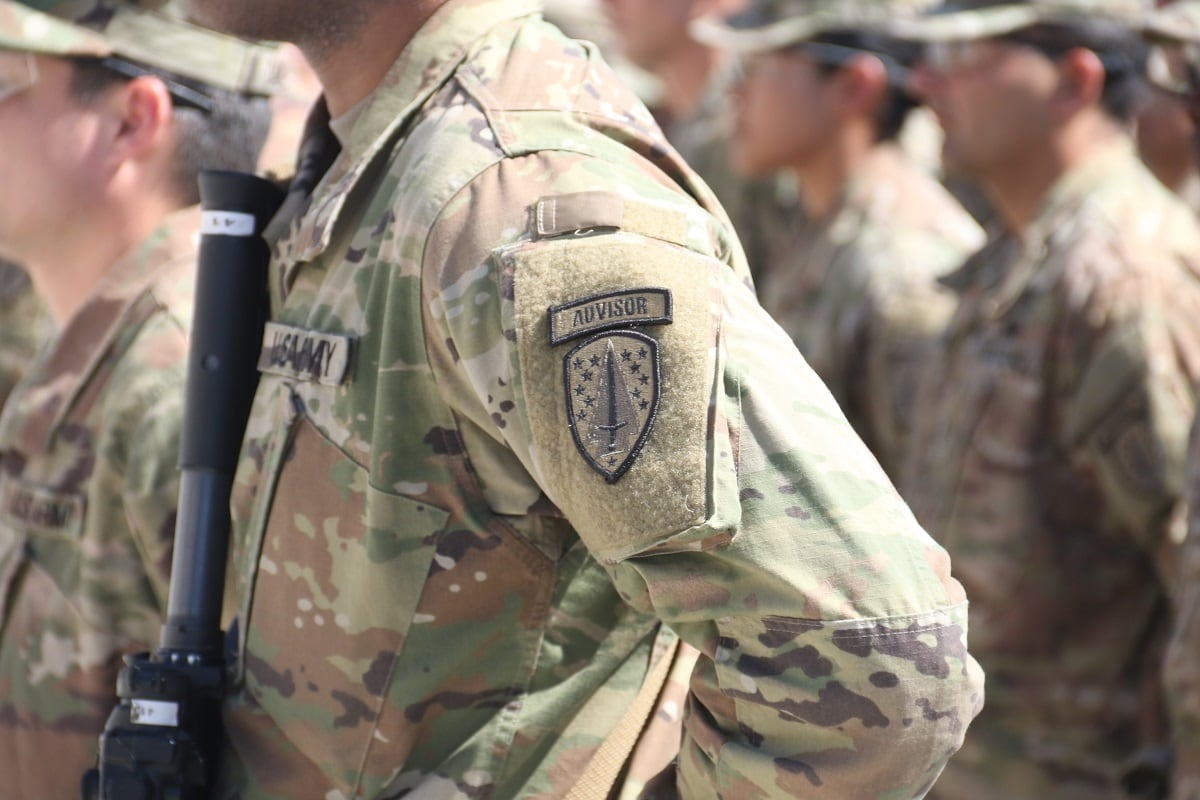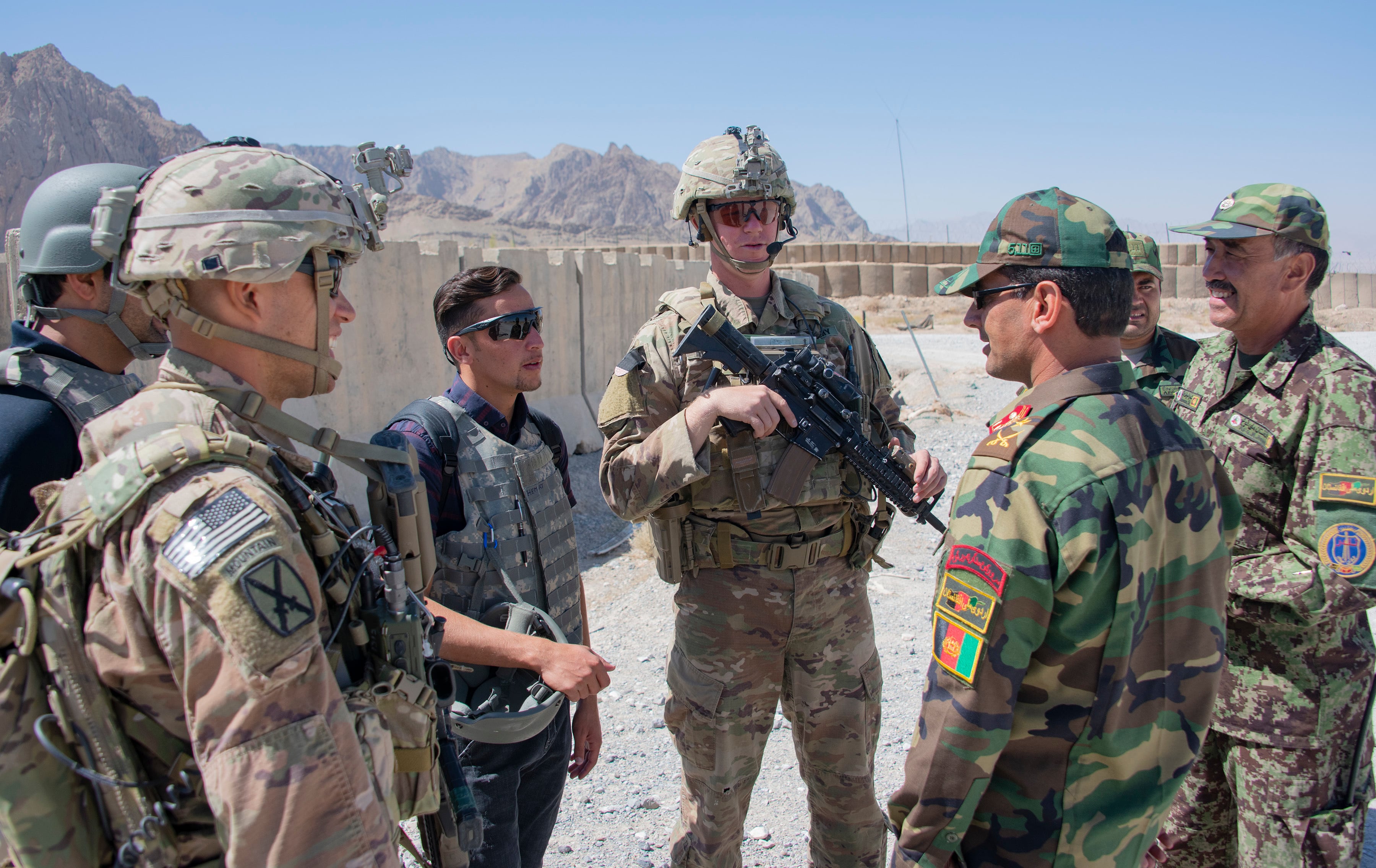ARLINGTON, Virginia – Though the first and second deployments of the Army’s security force assistance brigades might be nearly identical, the next deployments could have a radically different makeup of personnel and type of mission.
Brig. Gen. Scott Jackson and other soldiers from the 1st Security Force Assistance Brigade met with reporters Wednesday to talk about their nine-month deployment, which ended in November. The brigade commander gave the deployment a sense of scale.
The 800 soldiers of the 1st SFAB formed 58 advisory teams, partnered with 30 Afghan battalions and 15 brigades, Jackson said.
“That’s nearly half of the Afghan National Army,” he said.
RELATED

As the Army builds the remaining three active SFABs and a single Army National Guard SFAB, some elements will remain, such as keeping a small footprint of experienced soldiers who can operate with little oversight in austere environments.
But they may deploy in a new way.
“I think future deployments throughout the world will be in much smaller packages," Jackson told the Associated Press. “I think a situation where you have a single team in a single country is a likely scenario.”
The main areas where they will go are likely to be Africa, Europe and South America, Jackson said. Ongoing assessments will determine where to send the next SFABs besides Afghanistan.
Other deployments will depend on the needs of the combatant commanders they’re assigned to, and the mission and terrain.
“In the future, as subsequent SFABs come online, it creates a huge capacity,” Jackson said.
The scope of what an SFAB does will change as it aligns with the National Defense Strategy of near-peer competition, Jackson said.
On the recent 1st SFAB deployment, Capt. Gerard Spinney led an infantry company on the same airfield with Afghan counterparts in northern Kandahar province.
Sgt. 1st Class Sarah Lira handled demilitarization of ammunition and explosives sites and caches with corps level and other echelons.
Much of that mission remains in place for the recently deployed 2nd SFAB, which headed to Afghanistan in February.
Jackson said another SFAB is preparing to deploy, likely to Afghanistan, and there should not be a lapse in SFAB presence on the ground as there was between the first two deployments, which raised questions about the level of commitment to the mission.
As 1st SFAB transitions from deployment and awaits its next set of orders, Jackson noted their main challenge isn’t marksmanship training or combat casualty care.
“We’re adjusting the way we are integrating in a nonmilitary environment as part of our training plan, that’s probably the biggest change we’ll make,” Jackson said.
The 1st SFAB deployment that ended in November centered mostly on training. Spinney noted that his force never accompanied their partner Afghan infantry battalion. Instead they helped the Afghans better use their support mechanisms.
The Afghans had corps- and brigade-level resupply systems but didn’t know how to use them, the captain noted.
The unit was not without its share of combat losses during its recent deployment. Two soldiers were killed as a result of insider attacks.
Cpl. Joseph Maciel, of South Gate, California, was shot and killed by a member of the Afghan security forces in July, and Sgt. Maj. Timothy Bolyard, of Thornton, West Virginia, was killed by a member of the Afghan national police in September.
The one-star and other soldiers at the press conference acknowledged the losses, saying the two soldiers are remembered daily.
Building more SFABs
Of the Army’s planned six SFABs, five of them are for the active force, one for each combatant command, and a sixth in the Guard for U.S. Northern Command.
The 1st SFAB is stationed out of Fort Benning, Georgia, and the 2nd SFAB is out of Fort Bragg, North Carolina. The 3rd SFAB is being formed at Fort Hood, Texas. The 4th SFAB has a staff at Fort Carson, Colorado.
The 5th SFAB is slated to form at Joint Base Lewis-McChord, Washington, and the 6th SFAB will have a headquarters in the Indiana Army National Guard with battalions spread across six other states.
First announced in 2017, the 1st SFAB rapidly filled and deployed by 2018 as the Army sought volunteers for the new units. This came amid the shift in national strategy from counterinsurgency and counterterrorism operational focus to near-peer adversaries such as Russia and China.
The lingering challenges in Iraq with the Islamic State group and in Afghanistan with the Taliban and al-Qaida remnants meant the Army still needed to maintain train-and-advise missions.
The SFAB concept aimed to bridge that gap, freeing up the rest of the Army to focus on getting back to major combat operations as these tailored brigades partnered with conventional allied forces on everything from casualty care to logistics and basic patrolling, an add-on to the specialties of the smaller and often mission-strained Special Forces units.
The gap between the first and second brigade deployments brought criticism about the commitment of the advising mission, which was followed by announcements from President Trump of a 7,000 troop drawdown from Afghanistan. The drawdown has not yet occurred and U.S. troop levels remain at an estimated 14,500.
Between the two SFAB deployments the Arizona Army National Guard’s 1st 158th Infantry Battalion performed a variety of missions to include train, advise assist in Afghanistan.
Those levels include the Marine Corps Task Force Southwest, with Marines now on their third evolution of an advising mission that started in 2017. The most recent deployment began in October 2018 and each, so far, has been for nine months.
The Army has prioritized staffing the SFABs with bonuses.
In 2017, the Army offered $5,000 free and clear to soldiers who join an SFAB. In 2018, if a soldier reenlisted and went to an SFAB they stood to gain between $3,700 and $57,600, depending on their MOS and the length of the contract.
— The Associated Press contributed to this story
Todd South has written about crime, courts, government and the military for multiple publications since 2004 and was named a 2014 Pulitzer finalist for a co-written project on witness intimidation. Todd is a Marine veteran of the Iraq War.





